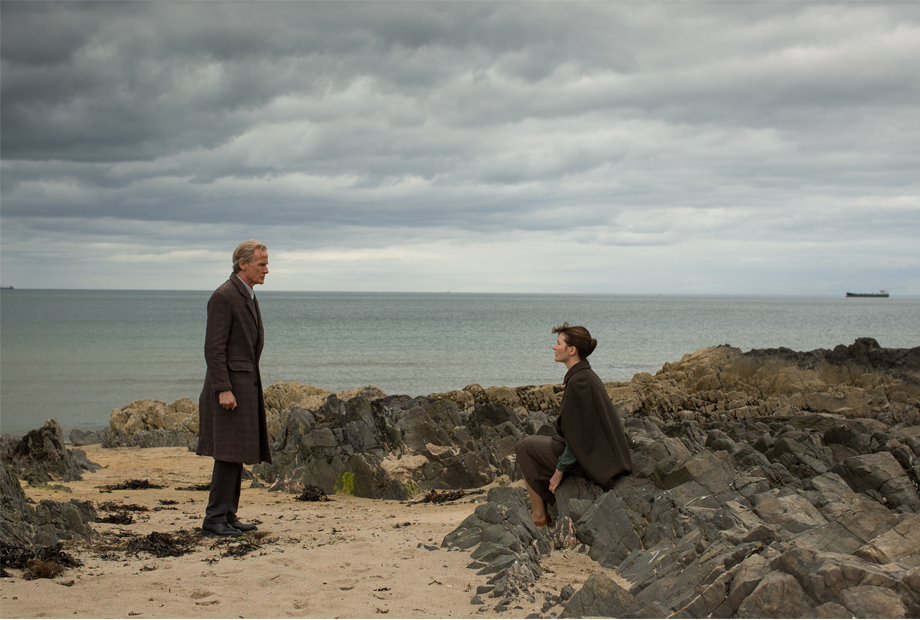In 1950s England, a young widow moves to a conservative coastal town to start a bookshop. Establishing herself in a long-dormant house on the main street, she soon comes into conflict with disapproving locals, including the town’s matriarch, who desires the property for herself.
It’s not hard to envision, from this description, an emotional tale of one woman’s endeavour to awaken a sleepy seaside town to the power of a good novel. Unfortunately, despite some enjoyable lead performances, Isabel Coixet’s The Bookshop doesn’t live up to the potential expected from an adaptation of Penelope Fitzgerald’s Booker Prize-nominated work.
The Bookshop never quite explains why Florence Green (Emily Mortimer) would choose Hardborough as the location for her shop, but what’s clear is that she has her work set out for her. Very few locals have any interest in reading, and the only one that seems keen on the idea of the shop itself, Mr Brundish (Bill Nighy), is a recluse who picks up his purchases via messenger boy.
Florence’s venture is further complicated by a conflict with Hardborough’s self-styled leader, Mrs Gamart (Patricia Clarkson). At an awkward, typically English party, Gamart passive-aggressively explains her intention to turn the so-named Old House that Florence has purchased into an arts centre. Why she’s suddenly come to this decision is unclear, especially as the Old House stood vacant for seven years before Florence’s arrival, but Gamart is used to getting her way, and so goes to great lengths attempting to bring the bookshop to ruin.
The pieces are all there, but they never quite fall into place. The Bookshop doesn’t so much show the impact the shop is having on the town as it does jump from scene to scene in which Florence and her assistant, a ludicrously well-spoken schoolgirl (Honor Kneafsey) take care of their day-to-day duties. It’s not particularly interesting, nor is it much fun.
One significantly missed opportunity comes when Florence decides to sell copies of Vladimir Nabokov’s Lolita. The controversial book brings a swarm of locals to the shop’s window, where they stare at Florence’s display with open-mouthed shock, but nobody ever reads it nor throws a brick in protest.
Its presence only seems to serve as a way to bring Florence and Brundish together halfway through the film’s 113 minute run time. The scenes between these two are The Bookshop‘s best moments. Florence is presented as courageous, though she more often comes off as completely naive, yet Mortimer performs her with grace and sincerity. Nighy’s Brundish is enigmatic and instantly likable. It’s a shame he’s not on screen more often.
The same can’t be said for Gamart, nor her lackey, the insufferable Milo North (James Lance). Both are so cartoonish that their presence only further nullifies the impact The Bookshop aims to deliver. It’s not entirely Clarkson’s nor Lance’s fault; they are just the two that suffer most under the script’s clunkier moments.
The aesthetic of Harborough is portrayed perfectly by art director Marc Pou, though cinematographer Jean-Claude Larrieu’s lighting and framing choices sometimes feel out of place, especially early on.
For all of this, The Bookshop will certainly find an audience who will appreciate its more sensitive moments. If you’re looking for a quintessentially English film with two enjoyable lead performances, this might be for you. If you’d prefer a story that handles the same themes with the depth they deserve, stick with the novel.
The Bookshop opens in Australian cinemas on May 24.

